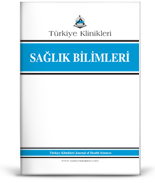Objective: Midwives' knowledge and skills in performing episiotomy are crucial for maternal care. This study aimed to evaluate the effect of episiotomy training using a chicken simulator on midwifery students' satisfaction, self-confidence, self-sufficiency, and anxiety levels. Material and Methods: A randomized controlled study was conducted with 73 midwifery students, assigned to a chicken simulator group (n=38) and a sponge simulator group (n=35). Data were collected using an Introductory Information Form, a Visual Analog Scale (VAS) for self-sufficiency, the State Anxiety Inventory (STAI-S), and the Student Satisfaction and Self-confidence in Learning Scale (SCLS). Results: Post-training VAS scores on self-sufficiency-including competence in episiotomy repair, identifying and suturing the apex, suturing muscle and skin, adjusting suture intervals and tightness, and using intermittent and continuous sutures-were significantly higher in the chicken simulator group compared to the sponge group (p<0.05). However, there was no significant difference in anxiety levels between groups (p>0.05). The chicken simulator group also reported significantly higher satisfaction and self-confidence scores (p<0.05). Conclusion: Training with a chicken simulator effectively enhances students' perceived competence, satisfaction, and self-confidence in episiotomy skills. Given its affordability, accessibility, ease of preparation, and ability to model both muscle and skin structures, the use of a whole chicken leg is recommended as a valuable tool in episiotomy education.
Keywords: Episiotomy; simulation; anxiety; self-confidence; satisfaction
Amaç: Ebelerin epizyotomi uygulamasındaki bilgi ve becerileri doğum bakım kalitesi açısından kritik öneme sahiptir. Bu çalışmanın amacı, tavuk simülatörü kullanılarak verilen epizyotomi eğitiminin ebelik öğrencilerinin memnuniyet, öz güven, öz yeterlilik ve kaygı düzeylerine etkisini değerlendirmektir. Gereç ve Yöntemler: Randomize kontrollü bu çalışmaya 38'i tavuk simülatörü grubunda, 35'i sünger simülatörü grubunda olmak üzere toplam 73 ebelik öğrencisi dâhil edilmiştir. Veriler, Giriş Bilgi Formu, Görsel Analog Skala (VAS)-Öz Yeterlilik, Durumluk Kaygı Envanteri (STAI-S) ve Öğrenme ve Öz Güven Ölçeği (SCLS) ile toplanmıştır. Bulgular: Eğitim sonrası yapılan değerlendirmede, epizyotomiye ilişkin öz yeterlilik düzeyi tavuk simülatörü grubunda sünger simülatörü grubuna kıyasla anlamlı derecede yüksek bulunmuştur (p<0,05). Özellikle epizyotomi tepesini belirleme, kas ve cilt dikimi, dikiş aralığı ve sıkılığını ayarlama gibi becerilerde tavuk grubunun puanları daha yüksekti. Gruplar arasında kaygı düzeyleri açısından anlamlı fark saptanmamıştır (p>0,05). Öğrencilerin memnuniyet ve öz güven düzeyleri ise tavuk simülatörü grubunda anlamlı olarak daha yüksektir (p<0,05). Sonuç: Tavuk simülatörü, ebelik öğrencilerinin epizyotomi uygulamasına yönelik algılanan yeterlilik, özgüven ve memnuniyetlerini artırmada etkili bir eğitim materyalidir. Ekonomik, erişilebilir ve kas-deri yapısını gerçekçi biçimde modelleyebilme özelliğiyle epizyotomi eğitiminde bütün tavuk bacağının kullanımı önerilmektedir.
Anahtar Kelimeler: Epizyotomi; simülasyon; kaygı; özgüven; memnuniyet
- Bilgin H, Arslan Özkan H. Kanıta Dayalı Gebelik ve Doğum Yönetimi. 1. Baskı. Ankara: Nobel Tıp Kitapevi; 2019. p.345-6.
- Beyene F, Nigussie AA, Limenih SK, Tesfu AA, Wudineh KG. Factors associated with episiotomy practices in bahirdar city, ethiopia: a cross-sectional study. Risk Manag Healthc Policy. 2020;13:2281-9. [Crossref] [PubMed] [PMC]
- Güler E, Erbil N. Factors affecting sexuality in the postpartum period and the responsibilities of health professionals. The Andrology Bulletin. 2022;24(2):147-54. [Link]
- Yılar Erkek Z, Öztürk Altınayak S. The effect of simulation teaching technique on the improvement of episiotomy performance skills and state anxiety of midwifery students in Turkey: rct. Clinical Simulation in Nursing. 2021;54(1):62-9. [Link]
- Beane M. Shadow learning: building robotic surgical skill when approved means fail. Administrative Science Quarterly. 2019;64(1):87-123. [Link]
- Dancz CE, Sun V, Moon HB, Chen JH, Özel B. Comparison of 2 simulation models for teaching obstetric anal sphincter repair. Simul Healthc. 2014;9(5):325-30. [Crossref] [PubMed]
- Şen Aytekin M, Kahraman A, Alparslan Ö. Ebelik öğrencilerine epizyotomi öğretmeye yönelik kullanılan simülasyon yöntemlerinin etkisi: sistematik derleme [Effect of simulation methods used for teaching episiotomy to midwifery students: a systematic review]. TOGÜ Sağlık Bilimleri Dergisi. 2021;2(2):211-24. [Link]
- Yang J, Bai H. Knowledge, attitude and experience of episiotomy practice among obstetricians and midwives: a cross-sectional study from China. BMJ Open. 2021;11(4):e043596. [Crossref] [PubMed] [PMC]
- Demirel G, Evcili F, Kaya N, Doganer A. The effect of episiotomy repair simulation on the anxiety and self-efficacy levels of midwifery students. Journal of Midwifery and Reproductive Health. 2020;8(1):2050-7. [Crossref]
- Guler H, Cetin P, Yurtsal ZB, Cesur B, Bekar M, Uçar T, et al. Effect of episiotomy training with beef tongue and sponge simulators on the self-confidence building of midwifery students. Nurse Educ Pract. 2018;30:1-6. [Crossref] [PubMed]
- Uyar Hazar H, Gültekin S. Ebelik Eğitiminde Simülasyon Kullanımı [Simulation Use in Midwifery Education Life Sciences]. 2019;14(3):74-83. [Link]
- Eston M, Stephenson-Famy A, McKenna H, Fialkow M. Perineal laceration and episiotomy repair using a beef tongue model. MedEdPORTAL. 2020;16:10881. [Crossref] [PubMed] [PMC]
- Spielberger CD. Manual for the State-Trait Anxietry, Inventory. California: Consulting Psychologist Press; 1970. [Crossref] [PubMed]
- Öner N, Le Compte A. Durumluk-Sürekli Kaygı Envanteri El Kitabı. 1. Baskı. İstanbul: Boğaziçi Üniversitesi Matbaası; 1983. [Crossref]
- Jeffries PR, Rizzolo MA. Designing and implementing models for the innovative use of simulation to teach nursing care of ill adults and children: a national, multi-site, multi-method study. 2006. [Link]
- Unver V, Basak T, Watts P, Gaioso V, Moss J, Tastan S, et al. The reliability and validity of three questionnaires: the Student Satisfaction and Self-Confidence in Learning Scale, Simulation Design Scale, and Educational Practices Questionnaire. Contemp Nurse. 2017;53(1):60-74. [Crossref] [PubMed]
- George D, Mallery P. SPSS for windows step by step: A Simple Guide and Reference. 10th ed. USA: Allyn&Bacon, Inc.; 2010. [Crossref] [PubMed]
- Aslan B. Epizyotomi Eğitiminde Kullanılan Farklı Materyallerin Ebelik Öğrencilerinin Becerisi Üzerine Etkisi [Yüksek lisans tezi]. İstanbul: Marmara University; 2019. [Link]
- Mert Karadaş M, Terzioğlu F. Obstetrik acillerde simülasyon eğitimi ve interdisipliner yaklaşım [Simulation education in obstetric emergencies and interdisciplinary approach]. Gümüşhane Üniversitesi Sağlık Bilimleri Dergisi. 2019;8(2):62-71. [Link]







.: Process List